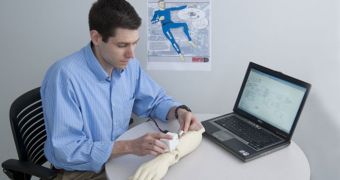One of the main problems that will affect astronauts during long space exploration journeys is the lack of gravity. The American space agency has now commissioned a group of researchers to investigate the creation of a new class of spacesuits that would resist their wearers' movements, simulating gravity.
Thus far, experts have considered numerous possibilities when it came to deciding on a design for replicating gravity. Some thought about constructing spacecraft around giant centrifuges that would keep space travelers pinned to the floor.
Yet the new proposal, from researchers at the Draper Laboratory's Human Centered Engineering Group, in Cambridge, Massachusetts, is one of the most brilliant. Investigators here propose the construction of a spacesuit that simulates gravity by resisting movement.
In other words, the instrument would work by detecting astronauts' movements and then restricting them slightly. This would simulate an environment such as Earth's, where this force acts on every single gesture we perform.
Lack of gravity has been associated with a host of health problems, including bone and muscle loss. Upon arrival on Earth, astronauts who spent 6-month tours aboard the International Space Station need to undergo several months of physical rehabilitation.
In the case of prolonged space journeys, such as 18-month treks to Mars and beyond, the effects would be considerably more pronounced. The recovery effort would also be proportionally more difficult.
But the new spacesuit design could make sure that astronauts do not lose so much bone or muscle mass in the first place. “We would expect the resistance to simulate movements against a gravitational acceleration when in microgravity,” Draper Lab expert Kevin Duda explains.
He holds an appointment as a senior member of the technical staff at the HCEG. The expert says that the movements of each astronaut would be gaged by an inertial measurement unit. This component would act on flywheel gyroscopes that control the amount of resistance the suit produces to movement.
Interestingly, the applications of such a suit extend well beyond indoor uses. Astronauts conducting operations on low-gravity planets and asteroids, and those who go out on spacewalks, could benefit from the stabilizing effect of the new suits.
“Sensing and adapting to exactly what an astronaut wants to do is difficult. We need to analyze the mechanics and prototype the concept before we can accurately quantify the type of performance we can expect,” Duda concludes, quoted by Space.
Scientists from the NASA Johnson Space Center, in Houston, Texas, and the Massachusetts Institute of Technology (MIT) are also a part of the study, which is conducted with funds from the space agency's Innovative Advanced Concepts program.

 14 DAY TRIAL //
14 DAY TRIAL //